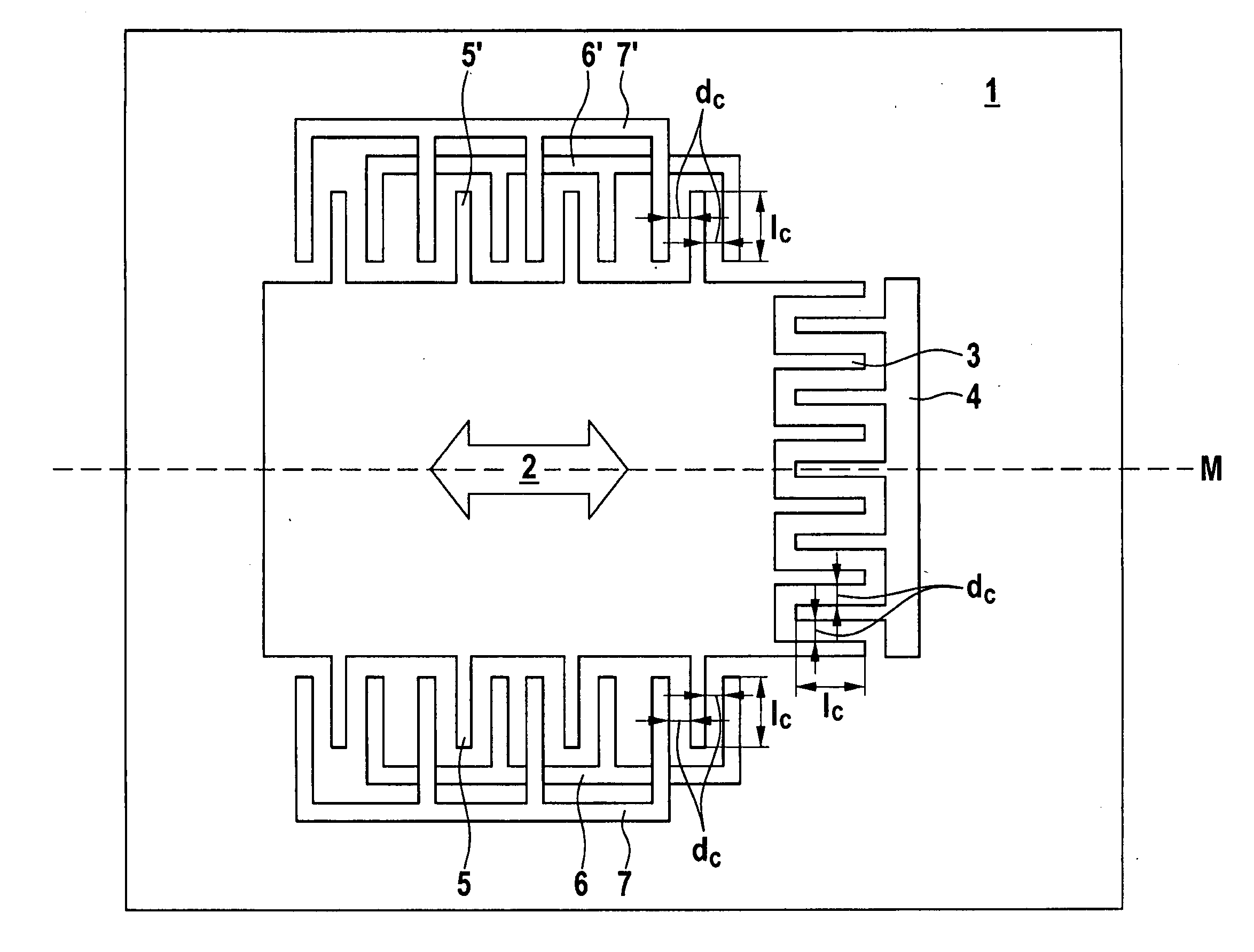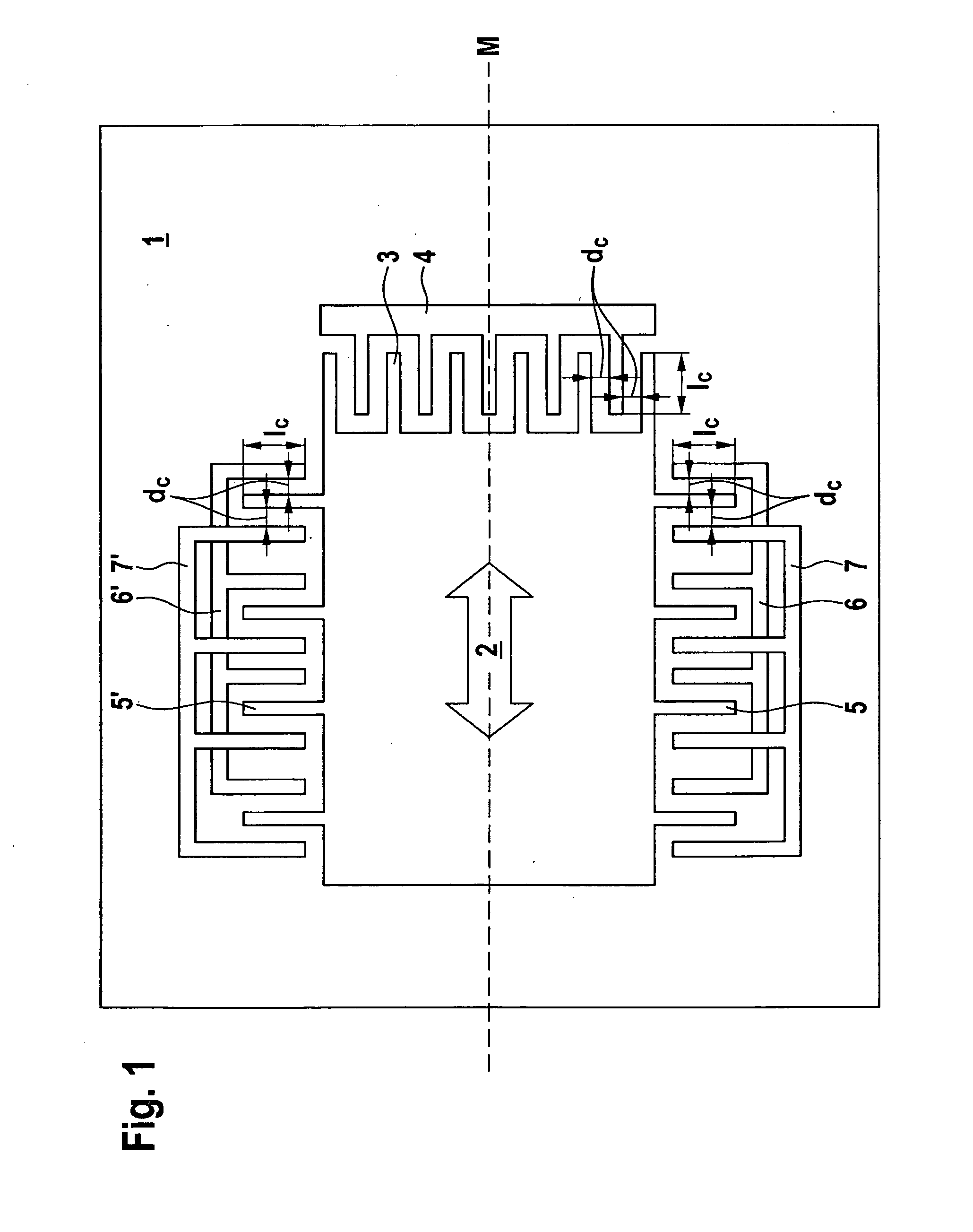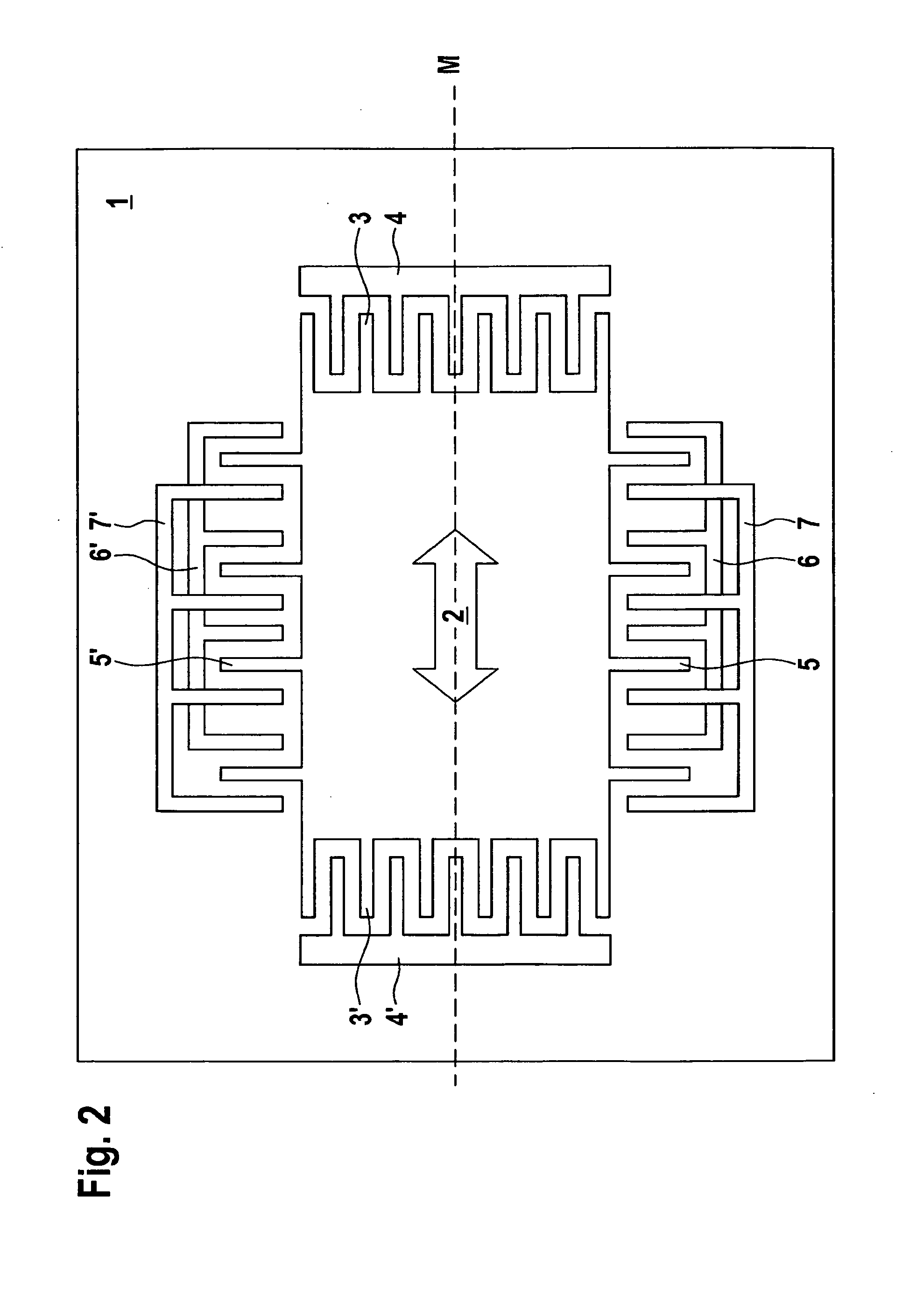Method for determining the sensitivity of an acceleration sensor or magnetic field sensor
- Summary
- Abstract
- Description
- Claims
- Application Information
AI Technical Summary
Benefits of technology
Problems solved by technology
Method used
Image
Examples
Embodiment Construction
[0036]FIG. 1 shows that the sensor has a substrate 1, an elastically supported seismic mass 2 which is movable relative to substrate 1, and three electrode systems 3, 4; 5, 6, 7; 5′, 6′, 7′ for deflecting mass 2 relative to substrate 1 along measuring axis M. The springs for movably suspending mass 2 are not illustrated in FIG. 1. FIG. 1 shows that first electrode system 3, 4 is situated on a first side of mass 2, and second electrode system 5, 6, 7 is situated on a second side of mass 2. FIG. 1 also shows that a further electrode system 5′, 6′, 7′ is situated on the side of the mass located opposite the second side. However, according to the present invention no electrode system is provided on the side of mass 2 located opposite the first side. This has the advantage that the surface area of the sensor may be reduced.
[0037]FIG. 1 also shows that second electrode system 5, 6, 7 and further electrode system 5′, 6′, 7′ are capacitor electrode systems in which the distance between elec...
PUM
 Login to View More
Login to View More Abstract
Description
Claims
Application Information
 Login to View More
Login to View More - R&D
- Intellectual Property
- Life Sciences
- Materials
- Tech Scout
- Unparalleled Data Quality
- Higher Quality Content
- 60% Fewer Hallucinations
Browse by: Latest US Patents, China's latest patents, Technical Efficacy Thesaurus, Application Domain, Technology Topic, Popular Technical Reports.
© 2025 PatSnap. All rights reserved.Legal|Privacy policy|Modern Slavery Act Transparency Statement|Sitemap|About US| Contact US: help@patsnap.com



